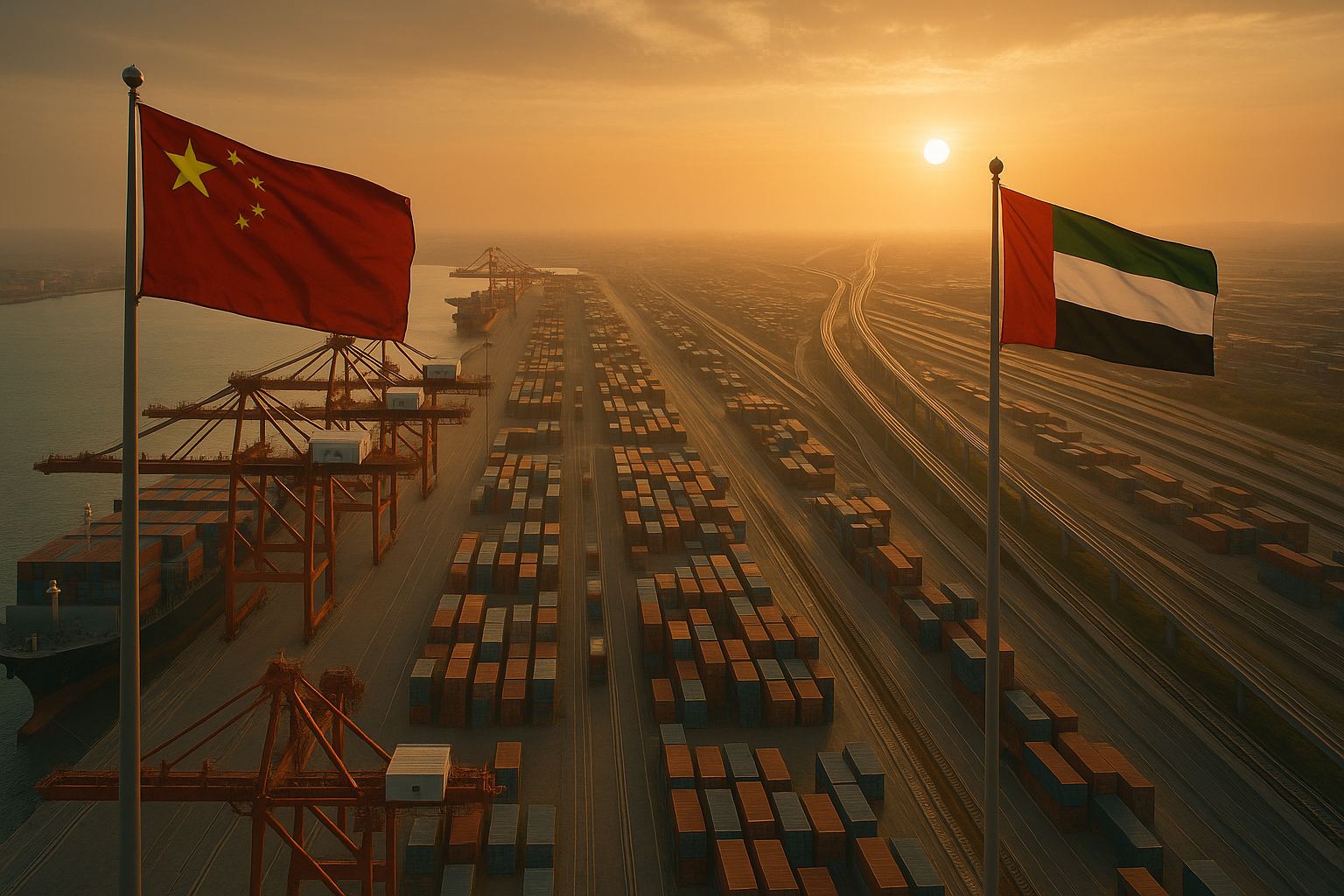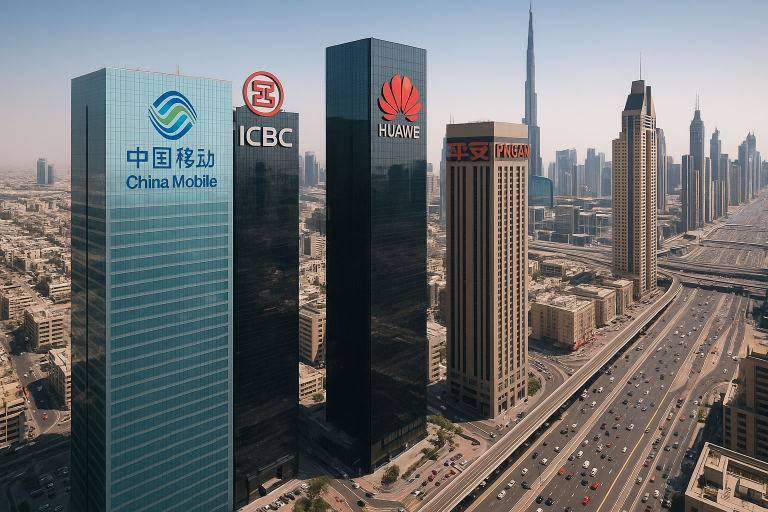Belt and Road Initiative: UAE as the Gateway to the Middle East and Africa
Introduction
Launched in 2013, the Belt and Road Initiative (BRI) stands as one of the most ambitious global development projects of the 21st century, a modern-day Silk Road designed to foster connectivity and shared prosperity across continents. Within this grand vision, the United Arab Emirates has emerged not merely as a participant, but as a linchpin—a pivotal hub and premier gateway connecting the economic might of Asia with the vast potential of the Middle East and Africa. The UAE’s enthusiastic embrace of the BRI, grounded in its strategic location, world-class infrastructure, and deep-seated partnership with China, has created a powerful synergy that is accelerating regional economic integration. This article explores the UAE’s indispensable role within the BRI framework, examining its strategic importance, the impact of joint investment initiatives, the development of landmark infrastructure projects, and the shared vision for the future of this transformative collaboration.
The UAE: A Linchpin in the Belt and Road
The UAE’s central role in the Belt and Road Initiative is a natural consequence of its unique strategic advantages. Geographically, the nation sits at the crossroads of major global trade routes, making it an essential node for both the maritime “Road” and the overland “Belt.” Its position offers unparalleled access to markets in the Middle East, Africa, Europe, and South Asia, making it the logical nexus for trade flows moving between East and West.
This geographical advantage is amplified by the UAE’s investment in world-class infrastructure. The country is home to some of the world’s most advanced and efficient ports, airports, and logistics networks. Jebel Ali Port in Dubai, one of the busiest ports globally, and Khalifa Port in Abu Dhabi, with its advanced container terminal co-developed with Chinese partners, are prime examples. These facilities provide the capacity and efficiency required to handle the massive volumes of trade generated by the BRI. This physical infrastructure is complemented by a sophisticated “soft” infrastructure of business-friendly regulations, free trade zones, and a stable political climate, which together create an ideal environment for Chinese and international companies to manage their regional operations.
The UAE-China Joint Investment Cooperation Fund: Fueling BRI Ambitions
A cornerstone of the BRI collaboration is the UAE-China Joint Investment Cooperation Fund. This $10 billion fund, established in 2015, represents a powerful commitment to jointly finance and develop strategic projects. It is a testament to the deep financial trust between the two nations and serves as a primary engine for realizing their shared BRI ambitions. The fund’s strategy is to invest in a diversified portfolio of projects that promise sustainable returns and contribute to economic development. Its scope is not limited to the UAE and China; a significant part of its mandate is to co-invest in third-party markets, with a particular focus on unlocking the potential of East Africa, thereby extending the reach and impact of the BRI.
The fund has been instrumental in supporting a range of impactful investments across sectors such as renewable energy, logistics, and technology. By providing a stable source of long-term capital, it de-risks major projects and attracts further investment, creating a virtuous cycle of growth and development. This joint fund is a model of financial cooperation within the BRI framework, demonstrating how two countries can pool their resources to achieve strategic objectives that would be difficult to attain individually.
Landmark Infrastructure Projects: Building the Arteries of Trade
The China-UAE partnership under the BRI is not just about finance; it is about building the physical arteries of 21st-century trade. Several landmark projects stand out as powerful symbols of this collaboration.
Case Study 1: Khalifa Port and Industrial Zone (KIZAD)
The development of Khalifa Port in Abu Dhabi is a flagship BRI project. The collaboration between Abu Dhabi Ports and China’s COSCO SHIPPING Ports Limited has resulted in the creation of a state-of-the-art container terminal that has significantly boosted the port’s capacity. This partnership extends beyond the port itself into the adjacent Khalifa Industrial Zone (KIZAD), where a dedicated China-UAE Industrial Capacity Cooperation Demonstration Zone has been established. This zone is designed to attract Chinese manufacturing, logistics, and technology companies, creating an integrated ecosystem that combines industrial production with seamless access to global markets through Khalifa Port.
Case Study 2: Dubai Logistics Corridor
Dubai’s logistics corridor, which connects Jebel Ali Port, Jebel Ali Free Zone (JAFZA), and Al Maktoum International Airport, is another critical asset for the BRI. Chinese companies have become major players within this ecosystem, leveraging its unparalleled connectivity to manage complex global supply chains. The efficiency of this corridor allows goods to be moved seamlessly from sea to air, reducing transit times and costs, and reinforcing Dubai’s status as a premier logistics hub for the region and beyond.
The Future of BRI in the UAE: A Vision for Deeper Integration
As the Belt and Road Initiative evolves, so too does the collaboration between China and the UAE. The future of their BRI partnership is focused on expanding into new, high-value sectors. There is a growing emphasis on the “Digital Silk Road,” with joint projects in data centers, 5G networks, and cross-border e-commerce. The “Green Silk Road” is another key priority, with both nations committed to co-investing in renewable energy projects and promoting sustainable development along the BRI routes.
Furthermore, there is a shared vision for extending their cooperation to third-country markets. Using the UAE as a stable and efficient launchpad, Chinese and Emirati companies are increasingly looking to jointly pursue opportunities in Africa and Central Asia, combining Chinese technology and manufacturing prowess with the UAE’s project management expertise and regional knowledge. In this endeavor, the UAE China Chamber of Commerce (UECN) will continue to be a vital facilitator, connecting businesses, identifying opportunities, and providing the support needed to navigate the complexities of multi-jurisdictional projects.
Conclusion: A Partnership Forging Global Connectivity
The UAE’s role in the Belt and Road Initiative is a defining feature of its modern international identity and a cornerstone of its partnership with China. It has masterfully leveraged its strategic location and world-class infrastructure to become the undisputed gateway for the BRI in the Middle East and Africa. This is a partnership that delivers clear mutual benefits: it provides China with a reliable and efficient hub for its global trade network, while it cements the UAE’s position as a central player in the future of global commerce. The collaboration within the BRI framework is about more than just building ports and industrial zones; it is about building a future of shared prosperity, enhanced connectivity, and deeper economic integration for the entire region and beyond.







